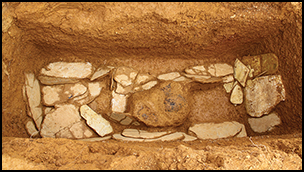Crossref Citations
This article has been cited by the following publications. This list is generated based on data provided by
Crossref.
Zhu, Simei
Li, Fajun
Chen, Xianglong
Fu, Xianguo
and
Hu, Yaowu
2021.
Subsistence and health in Middle Neolithic (9000–7000 BP) southern China: new evidence from the Dingsishan site.
Antiquity,
Vol. 95,
Issue. 379,
p.
13.
Wang, Weiwei
Nguyen, Kim Dung
Dang Le, Hai
Zhao, Chunguang
Carson, Mike T.
Yang, Xiaoyan
and
Hung, Hsiao-chun
2022.
Before Rice and the First Rice: Archaeobotanical Study in Ha Long Bay, Northern Vietnam.
Frontiers in Earth Science,
Vol. 10,
Issue. ,
Zhang, Xi
Huang, Chao
Zhou, Zhenyu
Olsen, John W.
Huang, Qiang
and
Guan, Ying
2022.
Plant Consumption by Early-Middle Neolithic Peoples in Guangxi, South China: Archaeobotanical Evidence From the Dingsishan Site.
Frontiers in Earth Science,
Vol. 10,
Issue. ,
Deng, Zhenhua
Huang, Bixiong
Zhang, Qianglu
and
Zhang, Min
2022.
First Farmers in the South China Coast: New Evidence From the Gancaoling Site of Guangdong Province.
Frontiers in Earth Science,
Vol. 10,
Issue. ,
Wang, Weiwei
Nguyen, Kim Dung
Le, Hai Dang
Zhao, Chunguang
Carson, Mike T.
Yang, Xiaoyan
and
Hung, Hsiao-chun
2022.
Rice and millet cultivated in Ha Long Bay of Northern Vietnam 4000 years ago.
Frontiers in Plant Science,
Vol. 13,
Issue. ,
Beurel, Simon
Bachelier, Julien B.
Hammel, Jörg U.
Shi, Gong-Le
Wu, Xie-Ting
Rühr, Peter T.
and
Sadowski, Eva-Maria
2023.
Flower inclusions of Canarium (Burseraceae) from Miocene Zhangpu amber (China).
Palaeoworld,
Vol. 32,
Issue. 4,
p.
592.
Yin, Su-Xin
Wu, Xie-Ting
Wang, Zi-Xi
and
Shi, Gong-Le
2023.
First fossil record of Canarium (Burseraceae) from the middle Miocene of Fujian, southeastern China and its paleoecological implications.
Palaeoworld,
Vol. 32,
Issue. 4,
p.
607.
Zhang, Yekun
Barron, Aleese
Pritchard, Jenifer
Wood, Rachel
and
Denham, Tim
2024.
A microCT assessment of archaeological parenchyma from three riverine shell middens dating to the early Holocene, Yongjiang River Basin, Guangxi, southern China.
Journal of Archaeological Science: Reports,
Vol. 56,
Issue. ,
p.
104553.
Ma, Yongchao
Li, Zhao
Li, Quan
Ma, Zhikun
Liu, Changjiang
Li, Yan
Cui, Yong
and
Yang, Xiaoyan
2024.
Affluent foragers in the subtropical forest: Arboreal foodstuff exploitation in late Neolithic Pearl River Delta, South China.
Journal of Archaeological Science: Reports,
Vol. 59,
Issue. ,
p.
104795.



